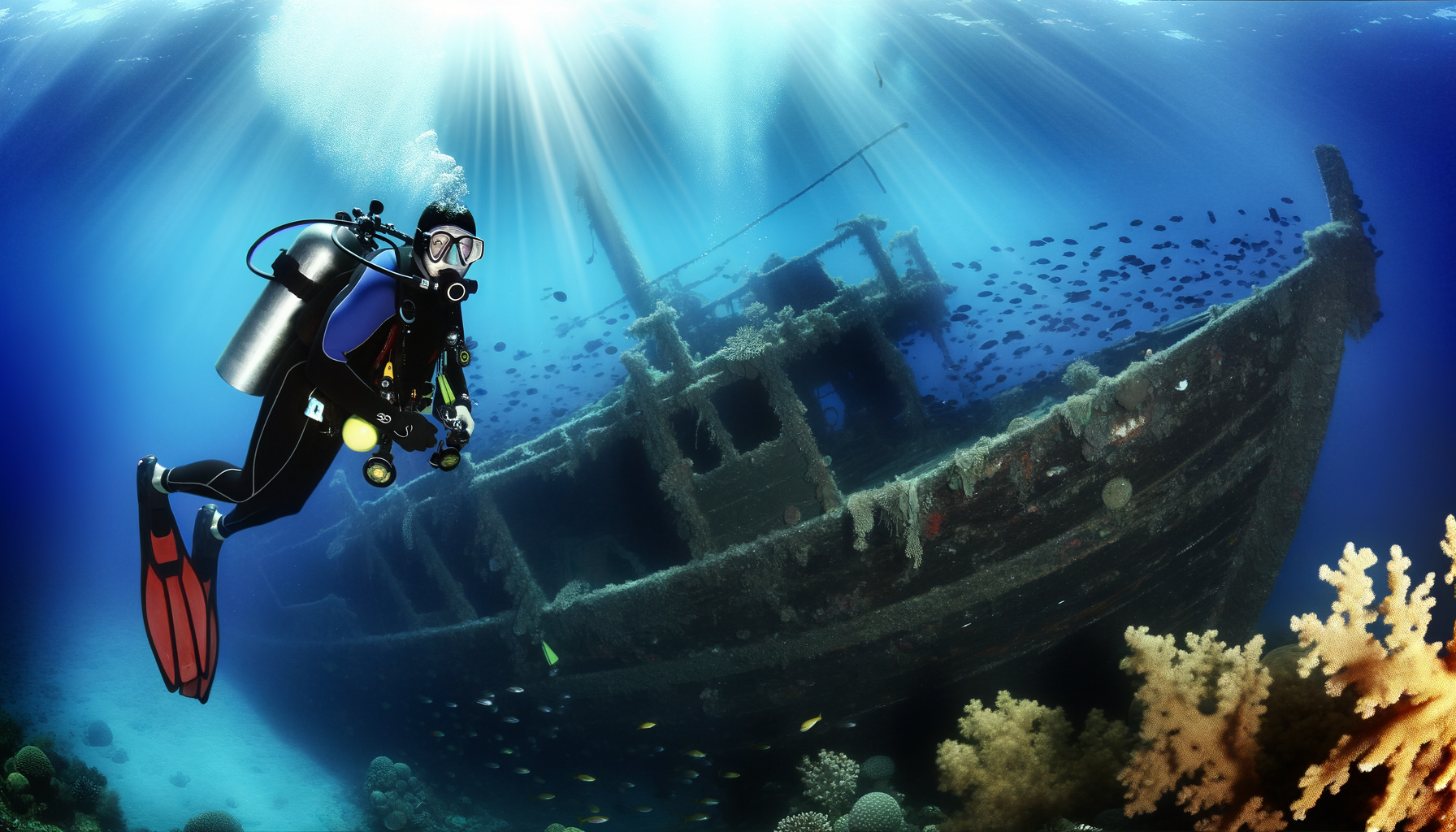
Wreck Diving Essentials
Wreck diving is an activity that allows divers to explore submerged ships, aircraft, and other structures. It comes in three varieties: non-penetration, limited penetration, and full penetration.
Non-Penetration Wreck Diving
This is suitable for beginners or those hesitant to enter wrecks. It involves exploring the exterior of wrecks that are too small, fragmented, or deteriorated for safe interior exploration.
Limited Penetration Wreck Diving
Divers navigate areas with minimal risks of entanglement or entrapment, staying within the natural light zone near entry points.
Full Penetration Wreck Diving
This advanced form allows divers to fully explore stable structures, akin to cave diving, and may include decompression stops. Divers can visit various compartments and discover remnants of the past.
Benefits of Wreck Diving
Wreck diving provides a firsthand historical experience and enhances diving skills, such as body positioning and buoyancy. It also offers rich photographic subjects due to the marine life that colonizes wrecks.
Prime Wreck Diving Locations
Egypt
With year-round diving and excellent visibility, Egypt boasts the SS Thistlegorm and Abu Nuhas’ shipwrecks, offering dives for all experience levels.
Micronesia
Truk Lagoon and Palau in Micronesia offer tranquil waters and an array of WWII wrecks, with options for both novice and technical divers.
Cayman Islands
The USS Kittiwake and the Russian Missile Frigate Keith Tibbetts are among the Cayman Islands’ famous wrecks, offering clear waters and diverse marine life.
Solomon Islands
The Solomon Islands feature unspoiled reefs and numerous WWII wrecks in Iron Bottom Sound, suitable for both simple and complex wreck explorations.
Australia
The SS Yongala, located in the Great Barrier Reef, is a protected site teeming with marine life, accessible only through specific liveaboard operators.
Philippines
Coron, Palawan, is recognized for its collection of sunken Japanese supply ships, best experienced through liveaboard diving.
Indonesia
Bali’s USAT Liberty shipwreck is a diver-friendly site, rich in marine life and accessible year-round.
Best Times for Wreck Diving
Wreck diving seasons vary by location, with Egypt and the Cayman Islands offering year-round opportunities, while the Philippines and Indonesia have optimal seasons.
Marine Life Encounters
Divers can encounter a diverse array of species that inhabit and seek refuge within wrecks, with each destination offering its unique highlights.
Eligibility for Wreck Diving
Wreck diving does not always require special certifications, and many sites are suitable for open water divers. Training courses are available for those seeking to expand their wreck diving capabilities.
Required Gear for Wreck Diving
While specialized gear is not always necessary, divers may use additional equipment such as dive computers, torches, reels, and knives for advanced wreck dives.
Essential Diving Skills
Good buoyancy, neat gear setup, and knowledge of the wreck layout are crucial to prevent accidents and ensure a safe dive. Wreck diver courses are recommended for learning safety and navigation skills.
Main Hazards of Wreck Diving
Disorientation, entanglement, and vision loss are primary concerns, especially during penetration dives. Proper training and gear can mitigate these risks. Non-penetration dives carry lower risks but still require caution.



